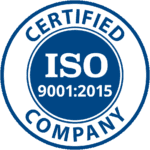 While lithium-ion batteries have revolutionized consumer electronics and made electric vehicles possible, they do not play a similar role in solar energy storage. Off the shelf Lithium-ion batteries are not designed for off-grid scaled storage. The three complaints that are most often associated with lithium-ion batteries are that they are a safety hazard, they are expensive and they have a short lifespan. Utilities and commercial solar energy users want something that will flawlessly last twenty years or more.
While lithium-ion batteries have revolutionized consumer electronics and made electric vehicles possible, they do not play a similar role in solar energy storage. Off the shelf Lithium-ion batteries are not designed for off-grid scaled storage. The three complaints that are most often associated with lithium-ion batteries are that they are a safety hazard, they are expensive and they have a short lifespan. Utilities and commercial solar energy users want something that will flawlessly last twenty years or more.
Lithium Ion Battery Cost
Cost is the first factor in determining whether to use lithium-ion batteries in a off grid application, such as solar lighting. Let’s compare the cost of a 200 amp hour backup with Gel and Lithium-ion batteries. A high quality 100 amp gel battery designed for 60 degrees Celsius will cost about $250 USD each. An equal 100 amp lithium-ion battery will cost between $1,050 and $2,100 USD each, a very big difference. The Gel battery will also work better in high temp environments such as desert and equatorial region applications, while the lithium-ion will have substantially reduced capacity when temperatures exceed 30 degrees Celsius. The life of the Gel battery at 50% depth of discharge can last 3 to 5 years, while the lithium ion battery will only last about 8 to 10 years. The cost of battery replacement is relatively minimal when examining the life cycle cost of a particular project. You can replace the gel battery around 3 times, including the cost of replacement maintenance, for less than the original price of the lithium ion battery. Using a long-term lithium ion battery will substantially increase the cost of the entire life cycle of any solar project. When considering the use of lithium ion, always look at the 20-year life cycle costs of the battery options available. Currently, Gel and AGM batteries will win the life-cycle cost comparison every time.
Lithium Ion Battery Lifespan
The short lifespan of lithium ion batteries also plays a major role in why it’s not the best for solar energy storage. There are also some challenges to using them in a series or parallel. For example, imagine three 8V lithium ion batteries are connected in a series. Each battery has its own battery management system. The bottom battery provides 8 volts, the second battery will bump up to 16 volts and the third battery will output 24 volts. When everything is working normally, the system will be functional. But, if just one battery detects an over-temperature on the cells and shuts off, the whole connection is severed. The other two batteries will see 8 volts difference on each battery and the battery in protection will detect the full stack voltage on the MOSFETs. A MOSFET (metal-oxide-semiconductor field-effect transistor) is a specialized FET (field-effect transistor), and like all transistors, is used for switching or amplifying signals. If the MOSFETs are not rated for the full stack voltage of the system, they will be damaged.
There are similar challenges with putting lithium ion batteries in a parallel to increase capacity. For example, when powering up a load with each battery pack in a series and sharing the full load current equally, each will need to be designed to accommodate the full load in the event the other packs shut off. Another concern is back-feeding, where a higher state-of-charge battery may discharge into a lower state-of-charge battery. While these challenges can be overcome, it isn’t without a hefty price tag.
Best Batteries for Off-Grid Solar Power Systems
Currently, lead-acid, AGM and Gel batteries are clearly the best choice for use with off-grid solar power systems. Deep-cycle, lead-acid batteries have been employed in renewable energy and reliably used in off-grid applications globally for decades. Industrial-type batteries can last as long as 20 years with moderate care and Gel and AGM batteries can last up to 7 when properly designed into a system.
When it comes to what type of lead-acid battery would best fit your off grid solar application, it all depends on your needs. Contact Solar Lighting International to discuss your commercial solar energy requirements. Call us at (803) 233-3461 to discuss your project.


